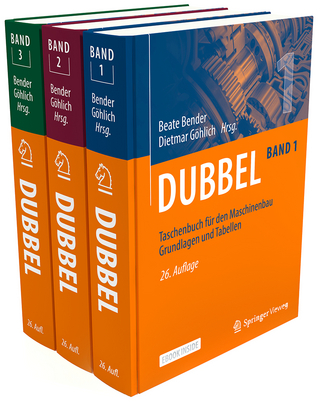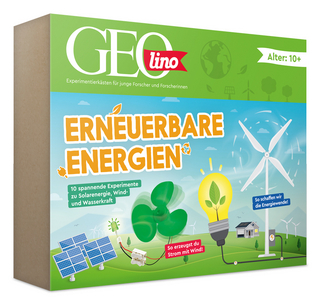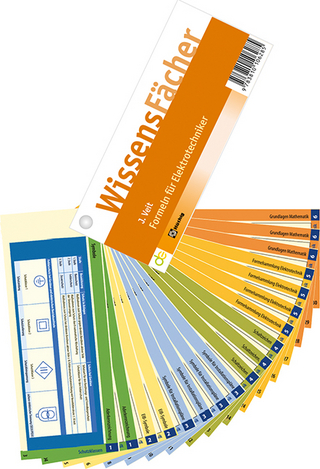
Digital Systems
Pearson
978-0-13-085634-0 (ISBN)
- Titel erscheint in neuer Auflage
- Artikel merken
For an introduction to digital systems in two- and four-year programs in technology, engineering, and computer science. While a background in basic electronics is helpful, the majority of the material requires no electronics training.
Tocci and Widmer use a block diagram approach to basic logic operations, to enable students to have a firm understanding of logic principles before they study the electrical characteristics of the logic ICs. For each new device or circuit, the authors describe the principle of the operation, give thorough examples, and then show its actual application.
(NOTE: Each chapter concludes with a Chapter Summary, Important Terms, Problems, and Answers to Section Review Questions.)
1. Introductory Concepts.
Numerical Representations. Digital and Analog Systems. Digital Number Systems. Representing Binary Quantities. Digital Circuits/Logic Circuits. Parallel and Series Transmission. Memory. Digital Computers.
2. Number Systems and Codes.
Binary-to-Decimal Conversions. Decimal-to-Binary Conversions. Octal Number System. Hexadecimal Number System. BCD Code. Putting It All Together. The Byte. Alphanumeric Codes. Parity Method for Error Detection. Applications.
3. Logic Gates and Boolean Algebra.
Boolean Constants and Variables. Truth Tables. OR Operation with OR Gates. AND Operation with AND Gates. NOT Operation. Describing Logic Circuits Algebraically. Evaluating Logic-Circuit Outputs. Implementing Circuits from Boolean Expressions. NOR Gates and NAND Gates. Boolean Theorems. DeMorgan's Theorems. Universality of NAND Gates and NOR Gates. Alternate Logic-Gate Representations. Which Gate Representation to Use. IEEE/ANSI Standard Logic Symbols.
4. Combinational Logic Circuits.
Sum-of-Products Form. Simplifying Logic Circuits. Algebraic Simplification. Designing Combinational Logic Circuits. Karnaugh Map Method. Exclusive-OR and Exclusive-NOR Circuits. Parity Generator and Checker. Enable/Disable Circuits. Basic Characteristics of Digital ICs. Troubleshooting Digital Systems. Internal Digital IC Faults. External Faults. Troubleshooting Case Study. Programmable Logic Devices.
5. Flip-Flops and Related Devices.
NAND Gate Latch. NOR Gate Latch. Troubleshooting Case Study. Clock Signals and Clocked Flip-Flops. Clocked S-C Flip-Flop. Clocked J-K Flip-Flop. Clocked D Flip-Flop. D Latch (Transparent Latch). Asynchronous Inputs. IEEE/ANSI Symbols. Flip-Flop Timing Considerations. Potential Timing Problem In FF Circuits. Master/Slave Flip-Flops. Flip-Flop Applications. Flip-Flop Synchronization. Detecting an Input Sequence. Data Storage and Transfer. Serial Data Transfer: Shift Registers. Frequency Division and Counting. Microcomputer Application. Schmitt-Trigger Devices. One-Shot (Monostable Multivibrator). Analyzing Sequential Circuits. Clock Generator Circuits. Troubleshooting Flip-Flop Circuits. Applications Using Programmable Logic Devices.
6. Digital Arithmetic: Operations and Circuits.
Binary Addition. Representing Signed Numbers. Addition in the 2's-Complement System. Subtraction in the 2's-Complement System. Multiplication of Binary Numbers. Binary Division. BCD Addition. Hexadecimal Arithmetic. Arithmetic Circuits. Parallel Binary Adder. Design of a Full Adder. Complete Parallel Adder with Registers. Carry Propagation. Integrated-Circuit Parallel Adder. 2's-Complement System. BCD Adder. ALU Integrated Circuits. IEEE/ANSI Symbols. Troubleshooting Case Study. A PLD Full Adder.
7. Counters and Registers.
Part I. Asynchronous (Ripple) Counters. Counters with MOD Numbers 2 N. IC Asynchronous Counters. Asynchronous Down Counter. Propagation Delay in Ripple Counters. Synchronous (Parallel) Counters. Synchronous Down and Up/Down Counters. Presettable Counters. The 74LS193/HC193. More On The IEEE/ANSI Dependency Notation. Decoding a Counter. Decoding Glitches. Cascading BCD Counters. Synchronous Counter Design. Shift-Register Counters.
Part II. Counter Applications: Frequency Counter. Counter Applications: Digital Clock. Integrated-Circuit Registers. Parallel In/Parallel Out—The 74ALS174/74HC174. Serial In/Serial Out—The 4731B. Parallel In/Serial Out—The 74ALS165/74HC165. Serial In/Parallel Out—The 74ALS164/74HC164. IEEE/ANSI Register Symbols. Troubleshooting. Programming PLDs as Counters Using Boolean Equations.
8. Integrated-Circuit Logic Families.
Digital IC Terminology. The TTL Logic Family. TTL Data Sheets. TTL Series Characteristics. TTL Loading and Fanout. Other TTL Characteristics. MOS Technology. Digital MOSFET Circuits. Complementary MOS Logic. CMOS Series Characteristics. Low-Voltage Technology. Open- Collector/Open-Drain Outputs. Tristate (Three-State) Logic Outputs. High-Speed Bus Interface Logic. The ECL Digital IC Family. CMOS Transmission Gate (Bilateral Switch). IC Interfacing. TTL Driving CMOS. CMOS Driving TTL. Analog Voltage Comparators. Troubleshooting.
9. MSI Logic Circuits.
Decoders. BCD-to-7-Segment Decoder/Drivers. Liquid-Crystal Displays. Encoders. Troubleshooting. Multiplexers (Data Selectors). Multiplexer Applications. Demultiplexers (Data Distributors). More Troubleshooting. Magnitude Comparator. Code Converters. Data Busing. The 74ALS173/HC173 Tristate Register. Data Bus Operation. PLDs and Truth Table Entry.
10. Interfacing with the Analog World.
Interfacing with the Analog World. Digital-to-Analog Conversion. D/A-Converter Circuitry. DAC Specifications. An Integrated-Circuit DAC. DAC Applications. Troubleshooting DACs. Analog-to-Digital Conversion. Digital-Ramp ADC. Data Acquisition. Successive-Approximation ADC. Flash ADCs. Other A/D Conversion Methods. Digital Voltmeter. Sample-and-Hold Circuits. Multiplexing. Digital Storage Oscilloscope. Digital Signal Processing (DSP).
11. Memory Devices.
Memory Terminology. General Memory Operation. CPU-Memory Connections. Read-Only Memories. ROM Architecture. ROM Timing. Types of ROMs. Flash Memory. ROM Applications. Semiconductor RAM. RAM Architecture. Static RAM (SRAM). Dynamic RAM (DRAM). Dynamic RAM Structure and Operation. DRAM Read/Write Cycles. DRAM Refreshing. DRAM Technology. Expanding Word Size and Capacity. Special Memory Functions. Troubleshooting RAM Systems. Testing ROM.
12. Applications of a Programmable Logic Device.
Fundamentals of PLD Circuitry. PLD Architectures. The GAL 16V8A (Generic Array Logic). Relating CUPL Fuse Plots to GAL 16V8 Architecture. Design Problems. The GAL 22V10. Keypad Encoder. Advanced PLD Development.
Appendix A: Introduction to the Microprocessor and the Microcomputer.
What Is a Digital Computer? How Do Computers Think? Secret Agent. Basic Computer System Organization. Basic …mC Elements. Computer Words. Instruction Words. Executing a Machine-Language Program. Typical …mC Structure. Final Comments.
Appendix B: Manufacturers' IC Data Sheets.
Glossary.
Answers to Selected Problems.
Index of ICs.
Index.
| Erscheint lt. Verlag | 14.7.2000 |
|---|---|
| Sprache | englisch |
| Maße | 208 x 262 mm |
| Gewicht | 1828 g |
| Themenwelt | Technik ► Elektrotechnik / Energietechnik |
| ISBN-10 | 0-13-085634-7 / 0130856347 |
| ISBN-13 | 978-0-13-085634-0 / 9780130856340 |
| Zustand | Neuware |
| Haben Sie eine Frage zum Produkt? |
aus dem Bereich



